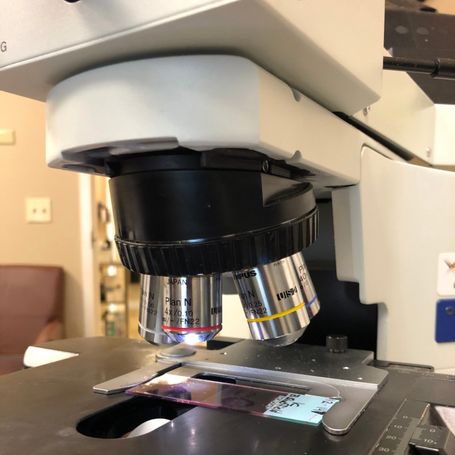
Mohs Surgery
Many procedures can be performed on the same day of your appointment. These include biopsies, freezing, and destruction of simple skin cancers. For larger or more complicated skin cancers, Mohs Micrographic Surgery is the treatment of choice.
Mohs micrographic surgery has set a new standard in skin cancer treatment. An increasing number of physicians are performing Mohs surgery, which is now widely accepted as the most effective treatment for most types of skin cancer. However, not all Mohs surgeons receive the same level of training. When it comes to your skin cancer treatment, you deserve no less than a fellowship-trained Mohs surgeon. Dr. Baker has achieved this highest degree of Mohs surgery qualification by completing an American College of Mohs Surgery approved fellowship. For you, this means peace of mind, knowing that you will receive superior quality and competency, as well as an optimal outcome. As an ACMS graduate, Dr. Baker gained an uncommon level of exposure, including everything from challenging tumor locations to rare tumor pathology and complex wound reconstruction. You can rest assured that he has the training and experience to achieve the best outcome from your skin cancer treatment.
Mohs surgery offers the highest available cure rate of all skin cancer treatments. Over 96% of skin cancers are cured following micrographic surgery even if other treatments have failed. 99% are cured if the cancer has not been treated before. Other methods of treatment average only a 60-85% chance of cure if previous treatments have failed. The technique was named in honor of its pioneer, Dr. Frederic Mohs.
Micrographic surgery is an outpatient office procedure and you will be able to
return home the same day. Our staff will escort you into a surgical suite where the surgeon will numb the area around the skin cancer. Once it is numb, the visible cancer and a thin layer of tissue will be removed. This tissue is carefully mapped and coded by the surgeon and taken to the adjoining laboratory where the technician processes the microscope slides. You will have a temporary dressing placed over the wound and will be free to return to the waiting room. The surgical procedure is usually quick. However, a minimum of 1 hour in the laboratory is required to process and examine the tissue. You will be asked to wait in the waiting room or in your vehicle while the laboratory work is being done. If remaining cancer cells (roots) are found, you will be brought back to the surgical suite and a second stage/layer will be taken from just that area. This will also be taken to the laboratory for processing while you wait. Although there is no way to tell before surgery how many stages will be needed, most cancers are removed in three stages or less.
The hardest part of the procedure is waiting for the results from the laboratory. This should be understood in historical context as testing in the past required 5-7 days. We would like to make the time you spend with us as pleasant and comfortable as possible. You may want to bring reading material to occupy your time. Coffee, soda and some snacks are available at the front desk. We prefer that you bring lunch or have your companion go out to get lunch for you. In some circumstances, you may be permitted to leave for lunch as well. Since we do not know in advance how much time will be needed to remove the cancer and repair the wound, we ask that you make no other commitments for the entire day of your surgery.
85 Tower Circle - Somerset, KY - 42503
Phone: 606-677-0336 - Fax: 606-677-0335
Office Hours: Monday thru Friday 8:00 am thru 4:00 pm
© Copyright. All rights reserved.
We need your consent to load the translations
We use a third-party service to translate the website content that may collect data about your activity. Please review the details in the privacy policy and accept the service to view the translations.
